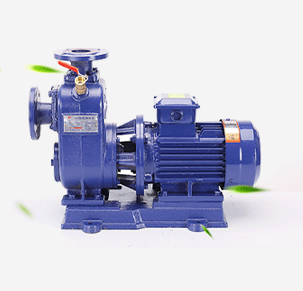Nepali
- Afrikaans
- Albanian
- Amharic
- Arabic
- Armenian
- Azerbaijani
- Basque
- Belarusian
- Bengali
- Bosnian
- Bulgarian
- Catalan
- Cebuano
- Corsican
- Croatian
- Czech
- Danish
- Dutch
- English
- Esperanto
- Estonian
- Finnish
- French
- Frisian
- Galician
- Georgian
- German
- Greek
- Gujarati
- Haitian Creole
- hausa
- hawaiian
- Hebrew
- Hindi
- Miao
- Hungarian
- Icelandic
- igbo
- Indonesian
- irish
- Italian
- Japanese
- Javanese
- Kannada
- kazakh
- Khmer
- Rwandese
- Korean
- Kurdish
- Kyrgyz
- Lao
- Latin
- Latvian
- Lithuanian
- Luxembourgish
- Macedonian
- Malgashi
- Malay
- Malayalam
- Maltese
- Maori
- Marathi
- Mongolian
- Myanmar
- Nepali
- Norwegian
- Norwegian
- Occitan
- Pashto
- Persian
- Polish
- Portuguese
- Punjabi
- Romanian
- Russian
- Samoan
- Scottish Gaelic
- Serbian
- Sesotho
- Shona
- Sindhi
- Sinhala
- Slovak
- Slovenian
- Somali
- Spanish
- Sundanese
- Swahili
- Swedish
- Tagalog
- Tajik
- Tamil
- Tatar
- Telugu
- Thai
- Turkish
- Turkmen
- Ukrainian
- Urdu
- Uighur
- Uzbek
- Vietnamese
- Welsh
- Bantu
- Yiddish
- Yoruba
- Zulu
Telephone: +86 13120555503
Email: frank@cypump.com
नोभ . 18, 2024 06:29 Back to list
Comparing Axial Flow and Mixed Flow Turbines in Various Applications and Performance Factors
Exploring the Differences Between Axial Flow and Mixed Flow Pumps
Pumps are critical components in various industrial applications, and understanding their types and operational principles is essential for optimal performance. Among the various types of pumps, axial flow and mixed flow pumps are widely used, each demonstrating unique characteristics and applications. This article explores the differences between these two types of flow pumps, highlighting their designs, operational principles, and suitable applications.
Axial Flow Pumps
Axial flow pumps, as the name suggests, move fluid along an axis parallel to the pump shaft. This design typically features a propeller or an impeller submerged in the fluid, which rotates to create a pressure difference. Consequently, the fluid is drawn into the pump at the eye of the impeller and expelled at the discharge side. The primary advantage of axial flow pumps is their ability to handle large volumes of fluid at relatively low pressures. This makes them particularly useful in applications requiring high flow rates without significant increases in pressure.
Common applications for axial flow pumps include irrigation systems, flood control, and municipal water supply. One crucial aspect of their design is the efficiency factor; these pumps tend to be more efficient at constant flow rates, making them ideal for processes that require steady water movement.
Mixed Flow Pumps
In contrast, mixed flow pumps incorporate characteristics of both axial and radial flow pumps. The mixed flow design allows fluid to be moved not just axially but also radially, creating a more complex flow pattern. The impeller of a mixed flow pump is typically designed to have both axial and radial blades, enabling it to generate higher pressure than an axial flow pump while still achieving relatively high flow rates.
'exploring the differences between axial flow and mixed flow ...'

This versatility makes mixed flow pumps suitable for applications where both high flow and higher pressure are necessary. They are commonly used in situations such as dewatering, irrigation, and in various industrial processes. Mixed flow pumps bridge the gap between axial and radial pumps, offering improved performance in scenarios where varied flow rates and pressures are required.
Key Differences
One of the main distinctions between axial and mixed flow pumps lies in their pressure capabilities. Axial flow pumps excel in low-pressure applications with high flow rates, whereas mixed flow pumps can handle both higher pressures and reasonable flow rates. This difference is largely due to the engineered design of the impellers.
Additionally, the operational speed of both pump types can vary significantly. Axial flow pumps generally operate at lower speeds, whereas mixed flow pumps can operate at higher speeds, which contributes to their greater efficiency over a range of operating conditions.
Conclusion
In summary, both axial flow and mixed flow pumps play essential roles in various industrial applications. While axial flow pumps are renowned for their ability to handle high volumes at low pressures, mixed flow pumps offer a unique combination of higher pressure and flow capabilities. Understanding these differences helps engineers and operators select the appropriate type of pump for their specific operational needs, ultimately enhancing efficiency and performance in fluid handling systems. As industries continue to evolve, the choice between axial and mixed flow pumps will remain a critical consideration for optimizing processes and ensuring effective fluid management.
-
Heavy-Duty Mining Sludge Pumps - Wear-Resistant Slurry Handling
NewsAug.02,2025
-
Horizontal Split Case Pump with GPT-4 Turbo | High Efficiency
NewsAug.01,2025
-
ISG Series Pipeline Pump - Chi Yuan Pumps | High Efficiency, Durable Design
NewsAug.01,2025
-
Advanced Flue Gas Desulfurization Pump with GPT-4 Turbo | Durable & Efficient
NewsJul.31,2025
-
ISG Series Vertical Pipeline Pump - Chi Yuan Pumps | Advanced Hydraulic Design&Durable Construction
NewsJul.31,2025
-
ISG Series Vertical Pipeline Pump - Chi Yuan Pumps | Energy Efficient & Low Noise
NewsJul.31,2025










